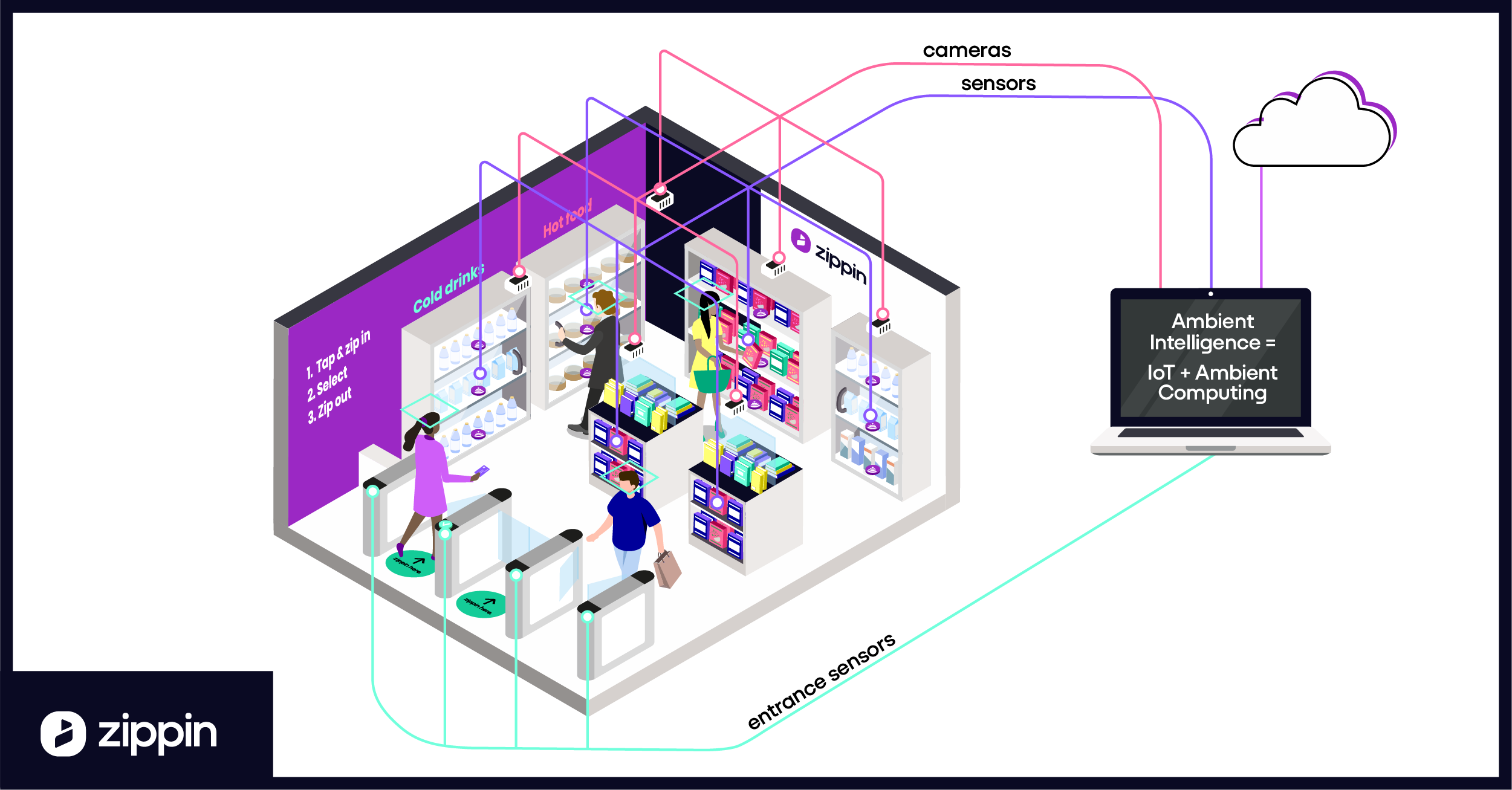Ambient intelligence–the combination of ambient computing and AI–makes our lives easier by embedding sensing and computing power around us. The embedding is such that the technology itself is invisible and seamless but the impact is huge–making our lives frictionless.
Thanks to ambient intelligence, we no longer have to fiddle with our remotes, struggling to find the “fwd” button. Instead, we can dictate to our smart televisions, order our pantry staples while watching our favorite TV shows, get insights on our physical activity, and understand our sleep patterns. Ambient intelligence is powering a new frictionless economy.
The promise of ambient computing has been around for decades. In fact the classic AI “Turing Test” can be viewed as a manifestation of ambient computing if we allowed the communication to be done naturally through voice. Humans naturally exist in physical spaces while computing lives in an entirely digital domain. First and foremost, ambient intelligence has to bridge this digital/physical divide through advances in sensing.
Ambient intelligence harnesses a variety of sensing technologies such as cameras and microphones; wearables such as heart rate monitors; internet of things device sensors such as flow, temperature, pressure, and weight sensors. All of this is aimed at digitizing the world around us, capturing our movements, actions, gestures and voices. This creates a treasure trove of data that can be analyzed and turned into actionable insights through AI.
Techniques such as computer vision, activity recognition, motion tracking, speech recognition, and natural language processing constitute the core of this AI. These techniques often use cloud computing to reduce the physical footprint required for running these algorithms. In many cases, due to the large volumes of data (especially for cameras and microphone arrays) or latency requirements, they rely on edge computing for an overall seamless experience.
Applications of Ambient Intelligence
The smart home revolution—where ambient intelligence digitizes our homes with voice, motion, and other sensors and can then react to human activity—is perhaps the most easily recognizable application of ambient intelligence.
Ambient intelligence can now also be seen in warehouse-like environments with assembly lines or packing facilities fitted out with sensors and cameras to capture the movement of humans through these spaces. The resulting sensory data can be analyzed to review performance, to find bottlenecks and to further create efficiencies. In many cases, robotics technology can be added to deliver complete automation. Warehouse automations remove friction by standardizing the execution of menial, repetitive actions, allowing human workers to focus on more complicated tasks. All this is powered by AI, aided by ambient computing technologies.
Once goods leave the warehouses, they might start their journey in what used to be dumb trains and freight cars. Equipped with IoT devices, these trains and freight cars can now monitor temperature, weight, location, delivery time windows, and warehouse activity. Effectively, the trains and freight cars become an intelligent network where the resulting data can be put to good use. This includes reducing maintenance and streamlining operations, often automatically adjusting speeds so shipments arrive on time while saving fuel.
All this is part of the frictionless economy, the improved provision of goods and services where technology has removed friction—from supply chain to consumption—resulting in increased profits and labor productivity gains. The frictionless economy is built on the advances in automation in industry, in commerce, and in the consumer sector. AI and IoT are combining to spread the benefits of automation into more varied spheres, adding to the economic impact. AI is being used to improve decision-making and drive efficiencies across a vast swathe of applications. It is revolutionizing the way we experience and interact with the world, with life-changing improvements in everyday activities such as health, enterprise, and retail.
Ambient Intelligence in Retail
The retail landscape is undergoing a huge transformation, driven, in these recessionary times, by customer demand for affordability and convenience. Customers still need physical retail outlets, despite the rise in e-commerce, and ambient intelligence is happening here too. Advances in different sensors, cameras, and edge computing continue to bring down the cost of deployment while increasing the robustness of these systems. We are now ready for frictionless retail powered by ambient intelligence.
The Zippin ambient intelligence platform uses a combination of overhead cameras and sensors on its shelves, along with its AI-driven software, to understand every customer’s actions. This is ambient intelligence in action, where we apply AI to ambient computing technologies. Zippin fuses the outputs from the cameras and the sensors through a sensor fusion algorithm which makes the solution significantly more robust and reliable. When the customer exits the store, Zippin’s system automatically tallies what they picked up, and charges their online account.
As well as reducing friction in the shopping experience of consumers, checkout-free technology can help retailers get access to higher-value e-commerce style insights about their customers’ behavior and real-time inventory data. All this value derives from the digitization of the retail space.
At Zippin, we think that ambient intelligence is rapidly enlarging the frictionless economy. I am sure with widespread adoption (we have served 1 million customers and counting!) people will see the frictionless benefits of ambient computing in more aspects of their lives.




